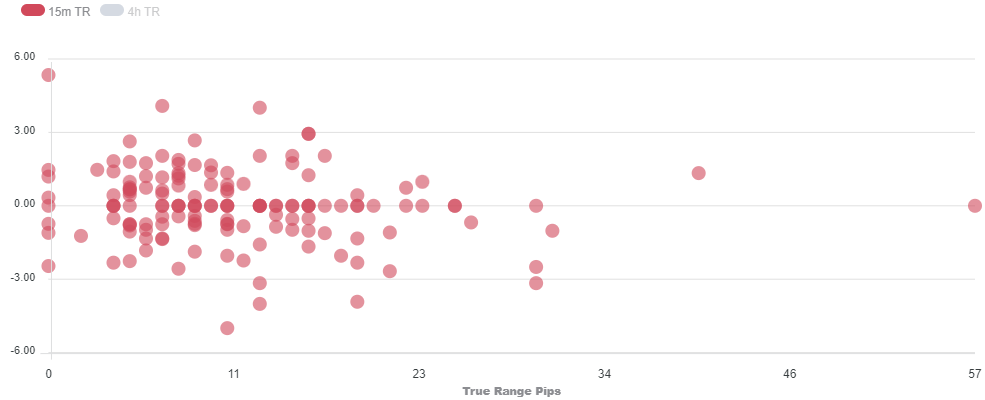The UK CPIs Overview
The cost of living in the UK, as represented by the Consumer Price Index (CPI) for April, is due early on Wednesday at 06:00 GMT.
Knowing the fact that Bank of England (BoE) Governor Andrew Bailey believes that interest rates in the United Kingdom have yet not been reached, today’s data will be watched closely by the GBPUSD traders.
The headline CPI inflation is expected to soften to 8.2% YoY figure versus 10.1% released for March while the Core CPI, which strips off volatile food and energy items, is seen steady at 6.2% YoY during April. Regarding the monthly figures, the CPI is expected to maintain a pace of 0.8% recorded in March.
It’s worth noting that easing labor market conditions due to higher interest rates reported last week also highlight the Producer Price Index (PPI) as an important catalyst for the immediate GBP/USD direction.
That being said, the PPI Core Output YoY is seen softening to 7.3% on a non-seasonally adjusted basis whereas the monthly prints could decelerate further to 0.1% versus 0.3% the prior release. Furthermore, the Retail Price Index (RPI) is also on the table for release, which is expected to drop to 11.1% YoY from 13.5% prior while the MoM prints could show a higher pace of 1.2% from 0.7% in previous readings.
Deviation impact on GBP/USD
Readers can find FXStreet's proprietary deviation impact map of the event below. As observed the reaction is likely to remain confined around 20-pips in deviations up to + or -2, although in some cases, if notable enough, a deviation can fuel movements over 30-40 pips.
How could it affect GBP/USD?
UK’s inflation has remained tied to the double-digit territory for the past nine months. Think tanks believe that labor shortages and historically high food inflation are the real culprits of extremely stubborn inflation. Individuals are announcing early retirements and the Brexit event dropped the number of job-seekers from the UK market. No doubt, the duo of UK PM Rishi Sunak and UK FM Jeremy Hunt has taken some measures to force individuals for avoiding early retirement, however, those measures need plenty of time to act.
On Tuesday, BoE Chief Economist Huw Pill in his testimony agreed that the central bank misunderstood the strength and persistence of UK inflation. BoE Pill said, “We are trying to understand why we have made errors in inflation forecasts.” However, BoE policymaker remained confident that longer-term inflation expectations have not drifted away from the target.
While BoE Governor Andrew Bailey in his testimony in front of UK parliament's Treasury Select Committee (TSC) gave assurance that declining gas prices and losing momentum in food prices are weighing heavily on inflationary pressures. Private sector wages are not accelerating as expected, which could fade bumper retail demand.
Technically, GBP/USD has swiftly approached the upper portion of the Falling Wedge chart pattern on a two-hour scale in which each pullback is considered a selling opportunity by the market participants. Also, chances of a bullish reversal remain higher as BoE Bailey is expected to raise interest rates further. A 40.00-60.00 range oscillation by the Relative Strength Index (RSI) (14) will get a decisive move after the release of the UK Inflation.
Keynotes
GBP/USD Price Analysis: Remains inside falling wedge ahead of UK Inflation
GBP/USD looks to regain 1.2450, focus on UK inflation, BoE’s Bailey and Fed Minutes
About the UK CPIs
The Consumer Price Index released by the Office for National Statistics is a measure of price movements by the comparison between the retail prices of a representative shopping basket of goods and services. The purchasing power of the GBP is dragged down by inflation. The CPI is a key indicator to measure inflation and changes in purchasing trends. Generally, a high reading is seen as positive (or bullish) for the GBP, while a low reading is seen as negative (or Bearish).
Information on these pages contains forward-looking statements that involve risks and uncertainties. Markets and instruments profiled on this page are for informational purposes only and should not in any way come across as a recommendation to buy or sell in these assets. You should do your own thorough research before making any investment decisions. FXStreet does not in any way guarantee that this information is free from mistakes, errors, or material misstatements. It also does not guarantee that this information is of a timely nature. Investing in Open Markets involves a great deal of risk, including the loss of all or a portion of your investment, as well as emotional distress. All risks, losses and costs associated with investing, including total loss of principal, are your responsibility. The views and opinions expressed in this article are those of the authors and do not necessarily reflect the official policy or position of FXStreet nor its advertisers. The author will not be held responsible for information that is found at the end of links posted on this page.
If not otherwise explicitly mentioned in the body of the article, at the time of writing, the author has no position in any stock mentioned in this article and no business relationship with any company mentioned. The author has not received compensation for writing this article, other than from FXStreet.
FXStreet and the author do not provide personalized recommendations. The author makes no representations as to the accuracy, completeness, or suitability of this information. FXStreet and the author will not be liable for any errors, omissions or any losses, injuries or damages arising from this information and its display or use. Errors and omissions excepted.
The author and FXStreet are not registered investment advisors and nothing in this article is intended to be investment advice.
Recommended content
Editors’ Picks

EUR/USD stabilizes near 1.0550 despite soft German inflation data
EUR/USD fluctuates in a narrow range near 1.0550 in the American session on Thursday. Soft inflation data from Germany makes it difficult for the Euro to gather strength, limiting the pair's upside, while US markets remain closed in observance of the Thanksgiving Day holiday.

GBP/USD trades below 1.2700 on modest USD recovery
GBP/USD struggles to gain traction and moves sideways below 1.2700 on Thursday. The US Dollar corrects higher following Wednesday's sharp decline, not allowing the pair to gain traction. The market action is likely to remain subdued in the American session.

Gold at risk of falling
Gold extends its shallow recovery from Tuesday’s lows as it trades in the $2,640s on Thursday. The yellow metal is seeing gains on the back of cementing market bets that the Fed will go ahead and cut US interest rates at its December meeting.

Fantom bulls eye yearly high as BTC rebounds
Fantom (FTM) continued its rally and rallied 8% until Thursday, trading above $1.09 after 43% gains in the previous week. Like FTM, most altcoins have continued the rally as Bitcoin (BTC) recovers from its recent pullback this week.

Eurozone PMI sounds the alarm about growth once more
The composite PMI dropped from 50 to 48.1, once more stressing growth concerns for the eurozone. Hard data has actually come in better than expected recently – so ahead of the December meeting, the ECB has to figure out whether this is the PMI crying wolf or whether it should take this signal seriously. We think it’s the latter.

Best Forex Brokers with Low Spreads
VERIFIED Low spreads are crucial for reducing trading costs. Explore top Forex brokers offering competitive spreads and high leverage. Compare options for EUR/USD, GBP/USD, USD/JPY, and Gold.
